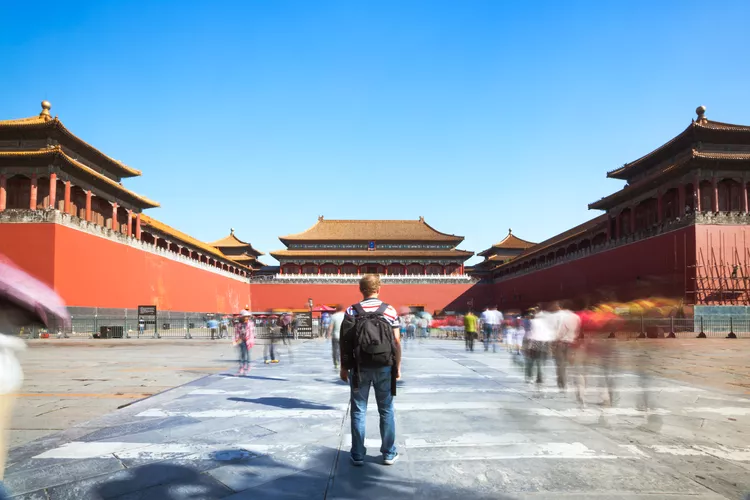Shanghai to Beijing: Trains vs Flights – The Ultimate Guide
Traveling between Shanghai and Beijing is one of the most common routes for both tourists and business travelers in China. With a distance of about 1,200 km (746 miles), the two megacities are connected by high-speed trains and flights. But which is the better option? This guide compares train and flight travel based on time, cost, comfort, and overall convenience to help you make the best choice.
Table of Contents
Travel Time: Which Is Faster?
High-Speed Train
The fastest high-speed trains between Shanghai and Beijing take 4 hours and 18 minutes. When you add check-in, security, and waiting time, the total journey can extend to about 5 hours.
Flight
A direct flight lasts around 2 to 2.5 hours, but you also need to factor in:
- Getting to the airport (at least 1 hour before departure)
- Security checks and boarding (minimum 1 hour)
- Waiting for luggage and transport from the airport (another 1-1.5 hours)
Total travel time can reach 5 to 6 hours, making flights not necessarily faster than high-speed trains.

Cost: Which Option Saves More Money?
High-Speed Train
- Second-class seat: CNY 498-667 (USD 71-95)
- First-class seat: CNY 933-1,083 (USD 133-154)
- Business class seat: CNY 1,488-1,748 (USD 213-250)
- Soft sleeper (on overnight trains): Around CNY 600 (USD 86)
Flight
- Economy class: CNY 700-1,800 (USD 100-260)
- Business class: CNY 2,000-5,000 (USD 285-715)
- Extra baggage fees: Can increase total cost significantly
While flights can be cheaper during promotions, high-speed trains have stable pricing and no hidden fees.

Convenience: Which Option Is Easier?
High-Speed Train Advantages
- Departs from downtown stations: Shanghai Hongqiao Railway Station and Beijing South Railway Station
- Faster boarding process: Security checks are quicker than airports
- Frequent departures: Around 40 trains per day, departing every 10-30 minutes
Flight Advantages
- More international connectivity: Convenient if transferring to another country
- Night flights available: Suitable for those who need to travel at odd hours
However, airport locations and long boarding procedures make flights less convenient for most domestic travelers.

Comfort: Which Option Offers a Better Experience?
High-Speed Train
- More legroom and wider seats than economy-class flights
- Ability to walk around freely
- Smooth ride with no turbulence
- Quiet business class for working travelers
Flight
- Limited legroom in economy class
- Restricted movement
- Turbulence can make the journey uncomfortable
- Premium classes offer better comfort but at a high price
For overall comfort, high-speed trains are the clear winner.

Punctuality: Which Is More Reliable?
High-Speed Train
- Highly punctual with minimal delays
- Weather-resistant; rain or snow rarely affects schedules
Flight
- Prone to delays due to weather, air traffic, and airport congestion
- Potential last-minute cancellations
If time reliability is important, the train is the better choice.
Environmental Impact: Which Is More Eco-Friendly?
High-Speed Train
- Lower carbon footprint per passenger
- Uses electric power, reducing greenhouse gas emissions
Flight
- Higher CO2 emissions per passenger
- More fuel consumption per km traveled
If sustainability is a priority, high-speed trains are the clear winner.

Booking Process: How to Get Your Ticket
High-Speed Train
- Online: 12306 China Railway official website, Trip.com, or Ctrip
- At the station: Can purchase tickets at ticket counters or machines
- Mobile apps: Alipay, WeChat Pay, and other travel apps
Flight
- Online: Airlines’ official websites, Trip.com, Expedia
- Travel agencies: Can help with booking international connecting flights
Both options allow online booking, but trains are easier since no passport details are required for domestic travelers.

Personal Experience: Which One Do I Prefer?
As someone who frequently travels between Shanghai and Beijing, I personally prefer high-speed trains for the following reasons:
- Consistent travel time without unexpected delays
- More comfortable seating and working environment
- Easy city-center access without extra transport costs
However, I also take flights when I have international connections, as flights can sometimes be cheaper during promotions.
Final Verdict: Which One Should You Choose?
| Factor | High-Speed Train | Flight |
|---|---|---|
| Travel Time | 4-5 hours | 5-6 hours |
| Cost | CNY 498-1,748 | CNY 700-5,000 |
| Convenience | Departs from city center | Airports far from city center |
| Comfort | Spacious, smooth ride | Less legroom, turbulence |
| Punctuality | Very reliable | Prone to delays |
| Eco-Friendliness | Lower carbon footprint | Higher emissions |
When to Choose High-Speed Trains
- If you want a reliable and comfortable trip
- If you prefer easy city-center access
- If you care about sustainability
When to Choose Flights
- If you find a cheap flight deal
- If you have an international connection
- If you need to travel late at night
Dig deeper
- Capital or Daxing Airport? The Ultimate Beijing Airport Guide
- Shanghai Airport Guide: Pudong or Hongqiao – Which Should You Choose?
Conclusion
Both options have their pros and cons, but for most travelers, high-speed trains provide a more efficient, comfortable, and environmentally friendly experience. Flights are ideal for those with specific time constraints or international connections. Choose based on your priorities, and enjoy your trip between Shanghai and Beijing!








